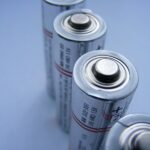Introduction: Chemical bonding is a fundamental concept in chemistry that helps us understand how atoms come together to form compounds and molecules. There are three primary types of chemical bonding: ionic bonding, covalent bonding, and metallic bonding. Each type has its own unique characteristics and plays a vital role in determining the properties of different substances. In this article, we will delve into the world of chemical bonding, exploring the definitions and examples of each type.
- Ionic Bonding: Ionic bonding occurs between a metal and a non-metal. It involves the transfer of electrons from one atom to another, resulting in the formation of ions. The metal atom loses electrons to become a positively charged ion (cation), while the non-metal atom gains those electrons to become a negatively charged ion (anion). The attraction between these oppositely charged ions forms an ionic bond.
A classic example of ionic bonding is sodium chloride (NaCl). Sodium (Na) donates an electron to chlorine (Cl), resulting in the formation of Na+ and Cl- ions. The electrostatic attraction between these ions creates the ionic bond in NaCl. Ionic compounds typically have high melting and boiling points, are often soluble in water, and form crystalline structures.
- Covalent Bonding: Covalent bonding occurs between non-metal atoms. In this type of bonding, atoms share electrons to achieve a more stable electron configuration. Unlike ionic bonding, covalent bonding involves the overlapping of atomic orbitals, resulting in the formation of shared electron pairs.
Water (H2O) is a prime example of a compound that exhibits covalent bonding. The oxygen atom forms covalent bonds with two hydrogen atoms by sharing electrons. The shared electrons are localized in the overlapping regions between the atomic orbitals of oxygen and hydrogen. Covalent compounds can vary in their properties, ranging from gases, such as oxygen (O2), to liquids, like water (H2O), and even solids, such as diamond (C).
- Metallic Bonding: Metallic bonding occurs between metal atoms. In this type of bonding, the valence electrons of metal atoms are not tightly bound to individual atoms but are free to move throughout the entire metal lattice. The positive metal ions are held together by a “sea” of delocalized electrons, creating a strong bond.
Copper (Cu) is a prime example of a metal that exhibits metallic bonding. In a copper metal lattice, each copper atom contributes its valence electrons to the shared electron sea. The delocalized electrons move freely between the metal ions, creating a unique bonding situation. Metallic bonding is responsible for the high electrical conductivity, malleability, and ductility of metals.
Conclusion: Understanding the different types of chemical bonding—ionic, covalent, and metallic—provides a deeper insight into the structure and properties of compounds and materials. Ionic bonding involves the transfer of electrons between a metal and a non-metal, covalent bonding entails the sharing of electrons between non-metal atoms, and metallic bonding relies on the delocalization of electrons in a lattice of metal atoms.
By studying chemical bonding, scientists and researchers can explain a vast array of phenomena and develop new materials with specific properties. From the formation of salts and the behavior of organic compounds to the conductivity of metals, chemical bonding plays a vital role in shaping the world around us.
So, the next time you encounter a compound or material, take a moment to ponder the forces of chemical bonding at play, bridging the atomic world and giving rise to the vast diversity of substances that make up our universe.















